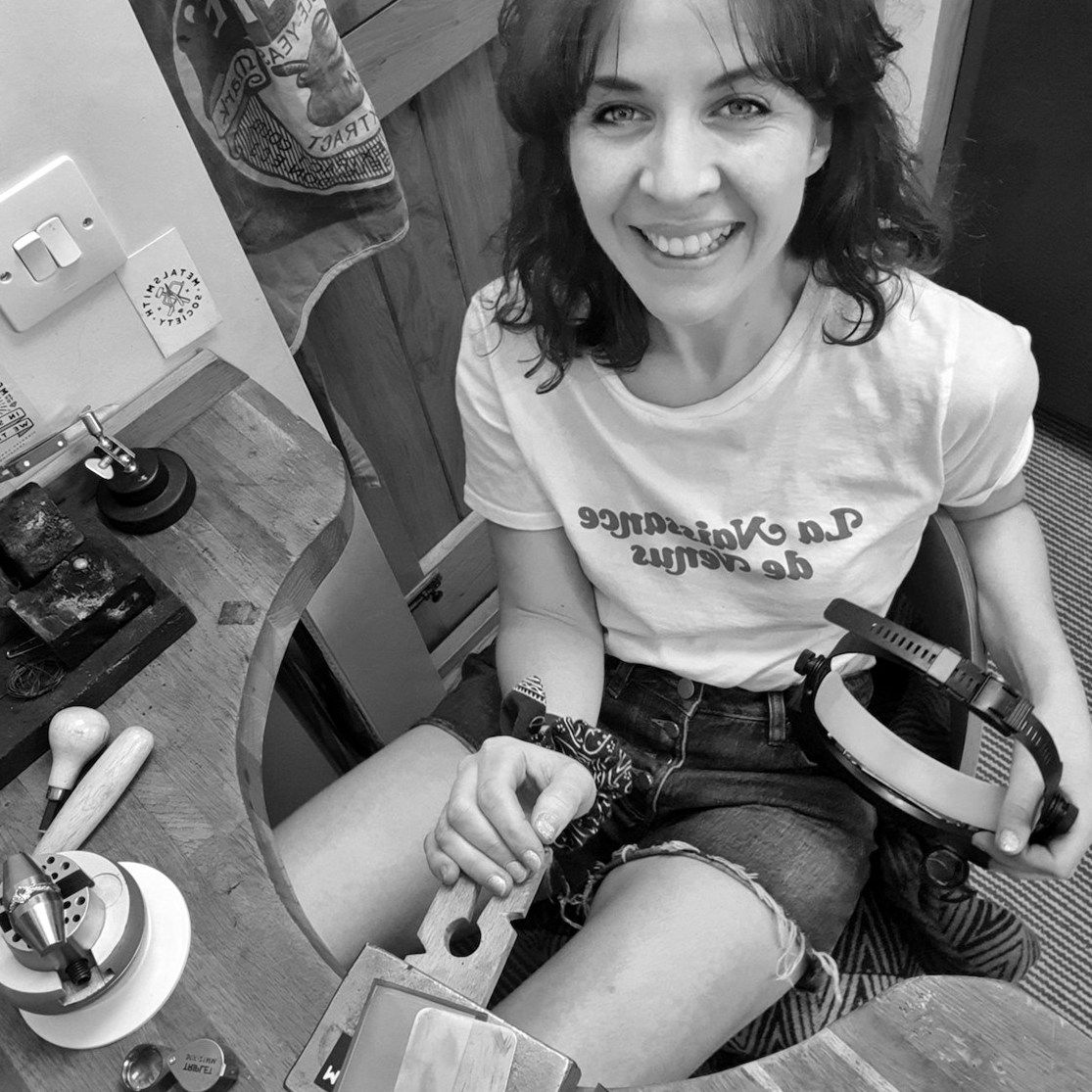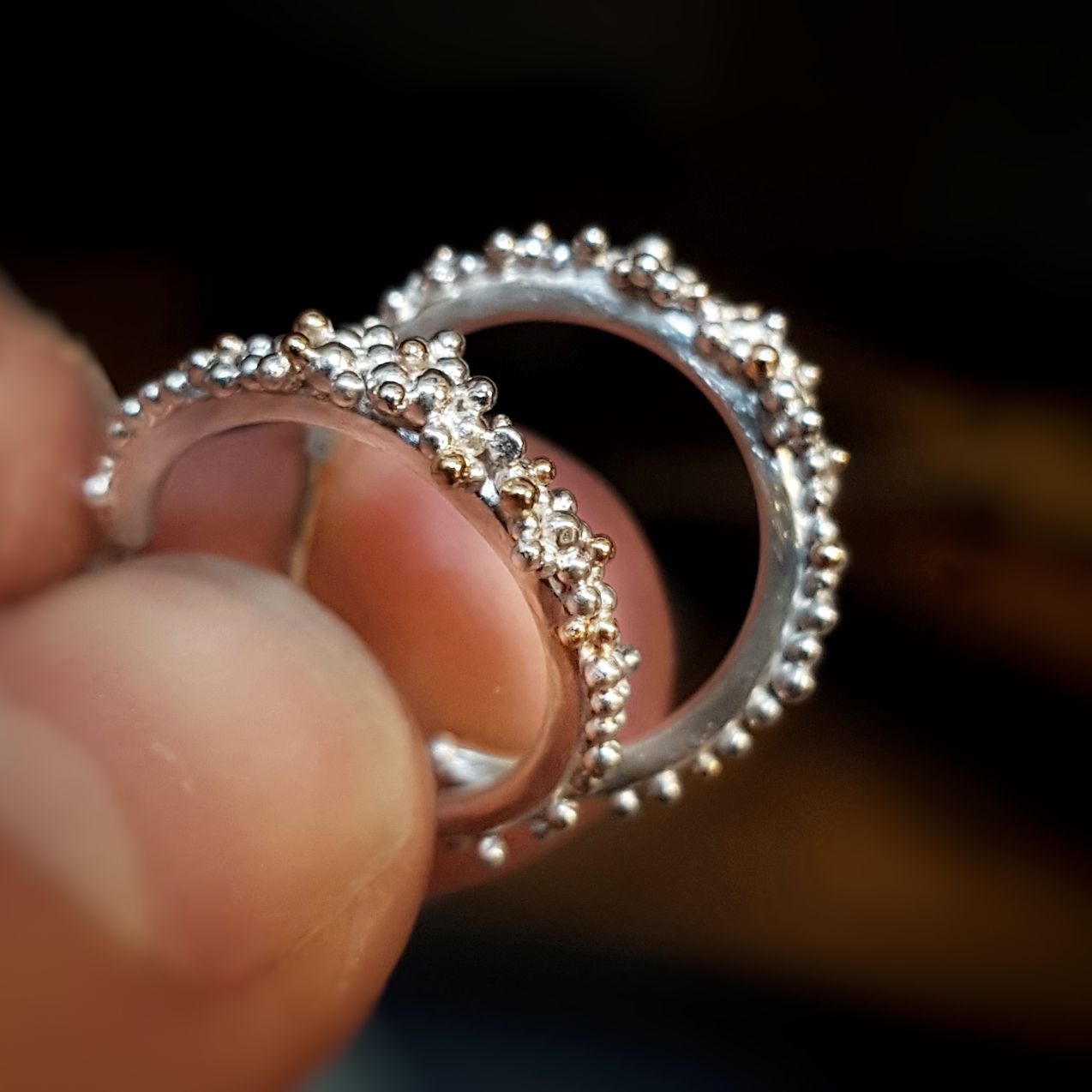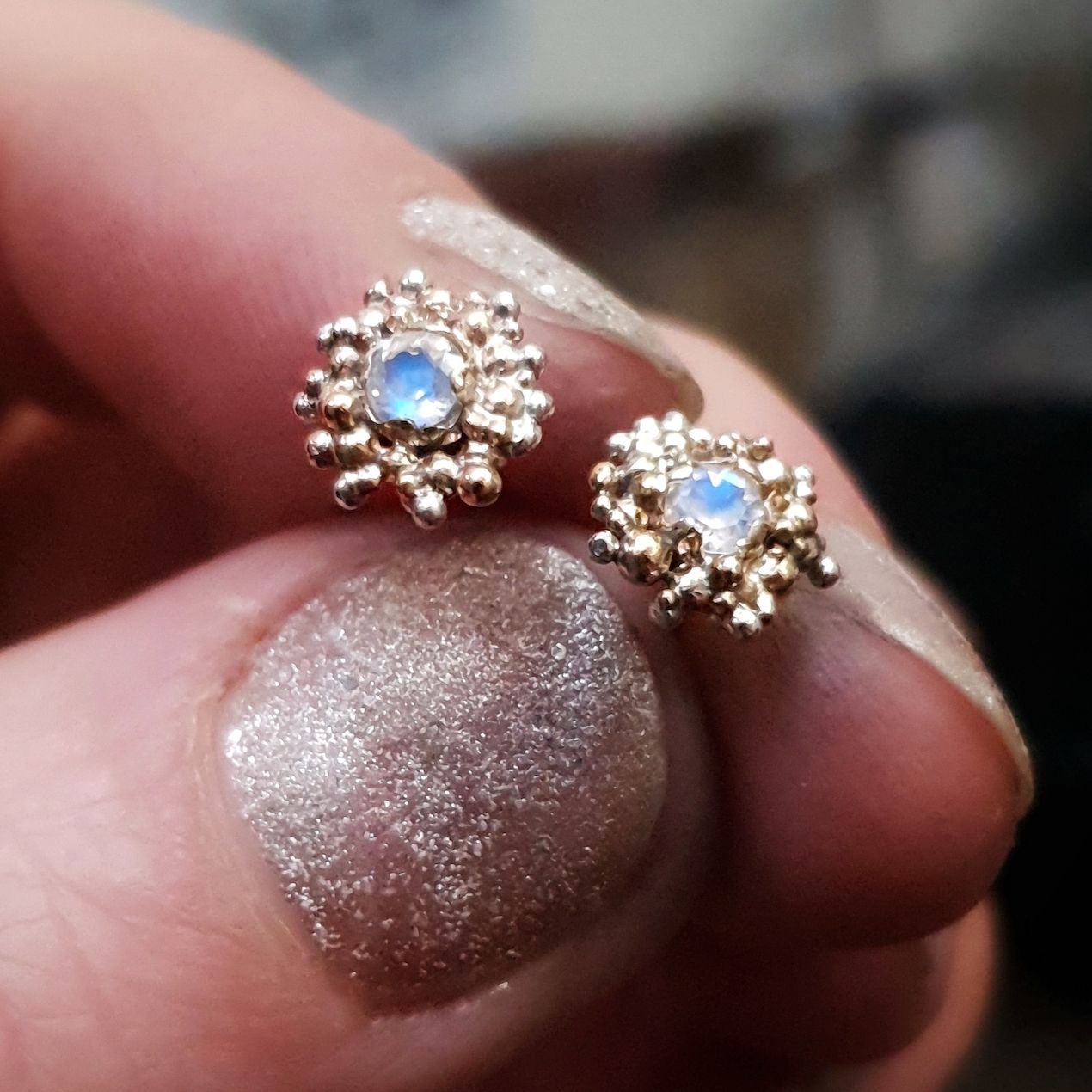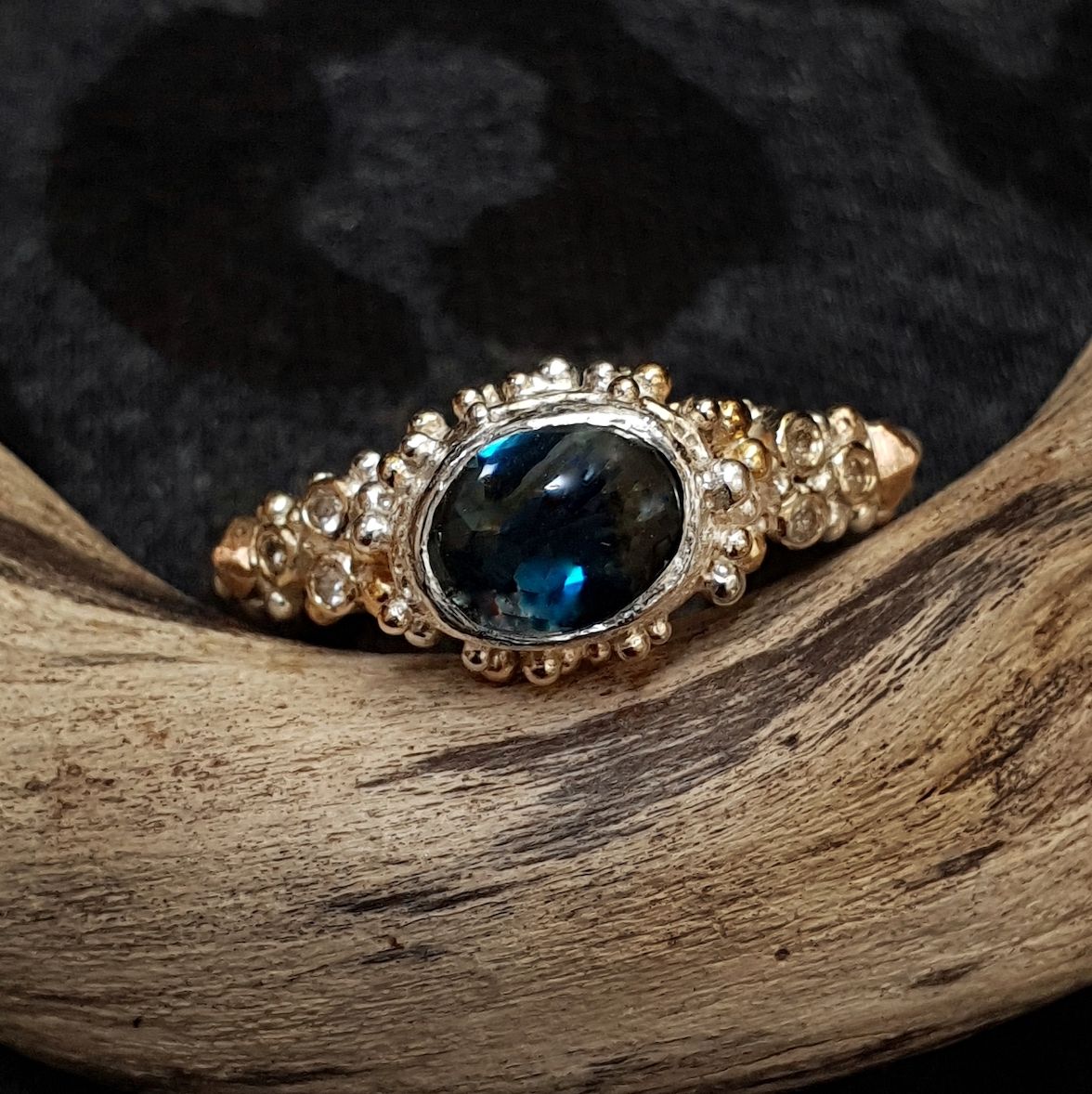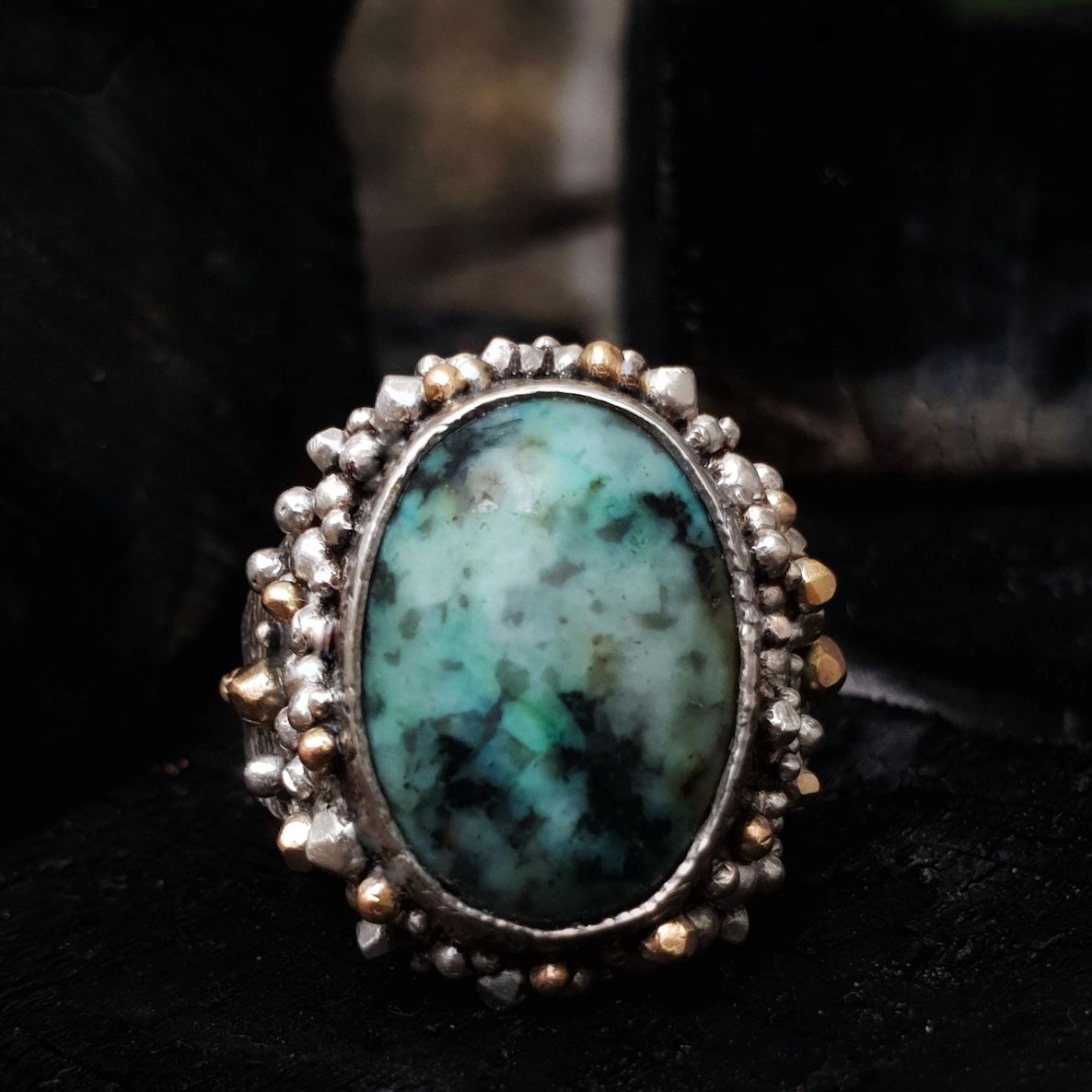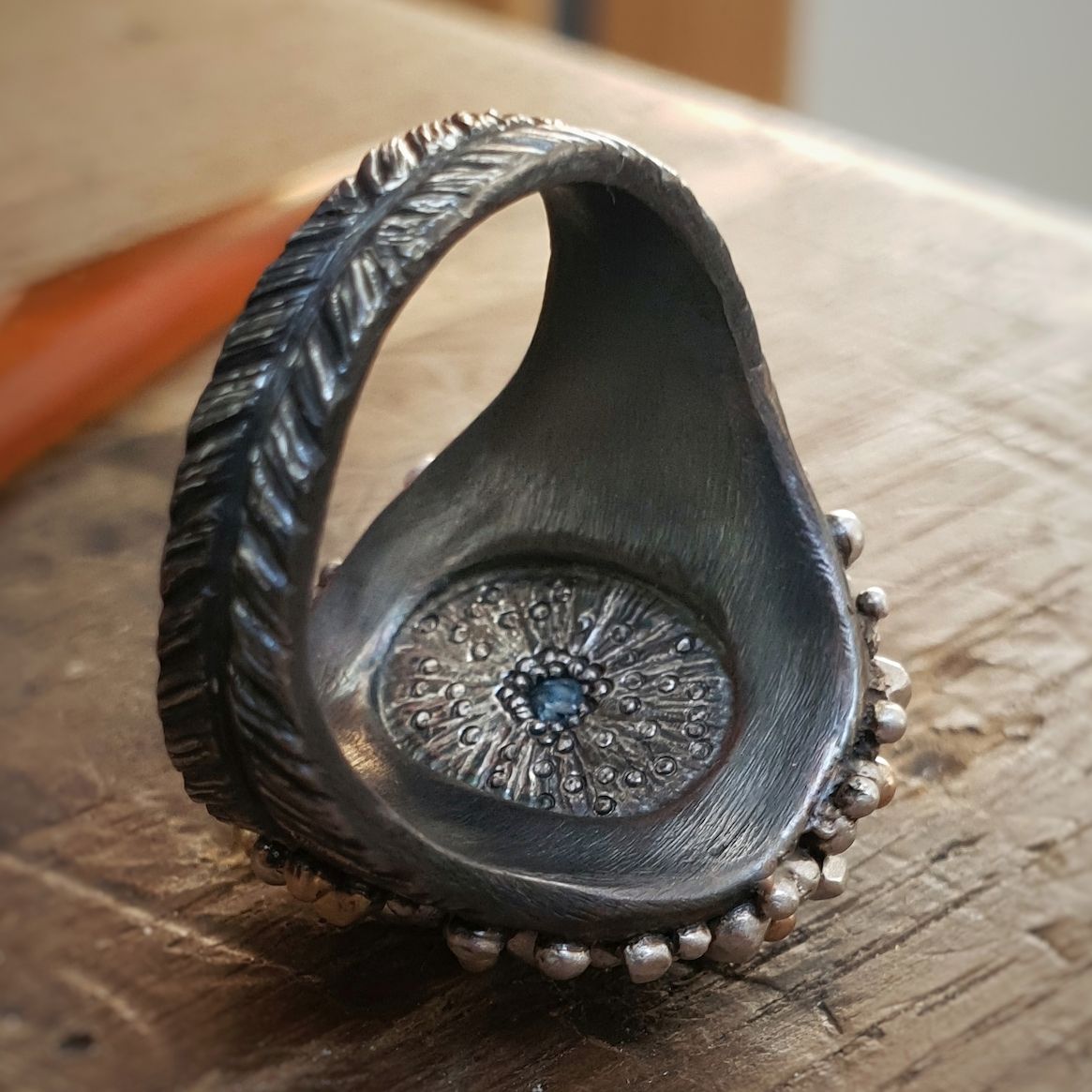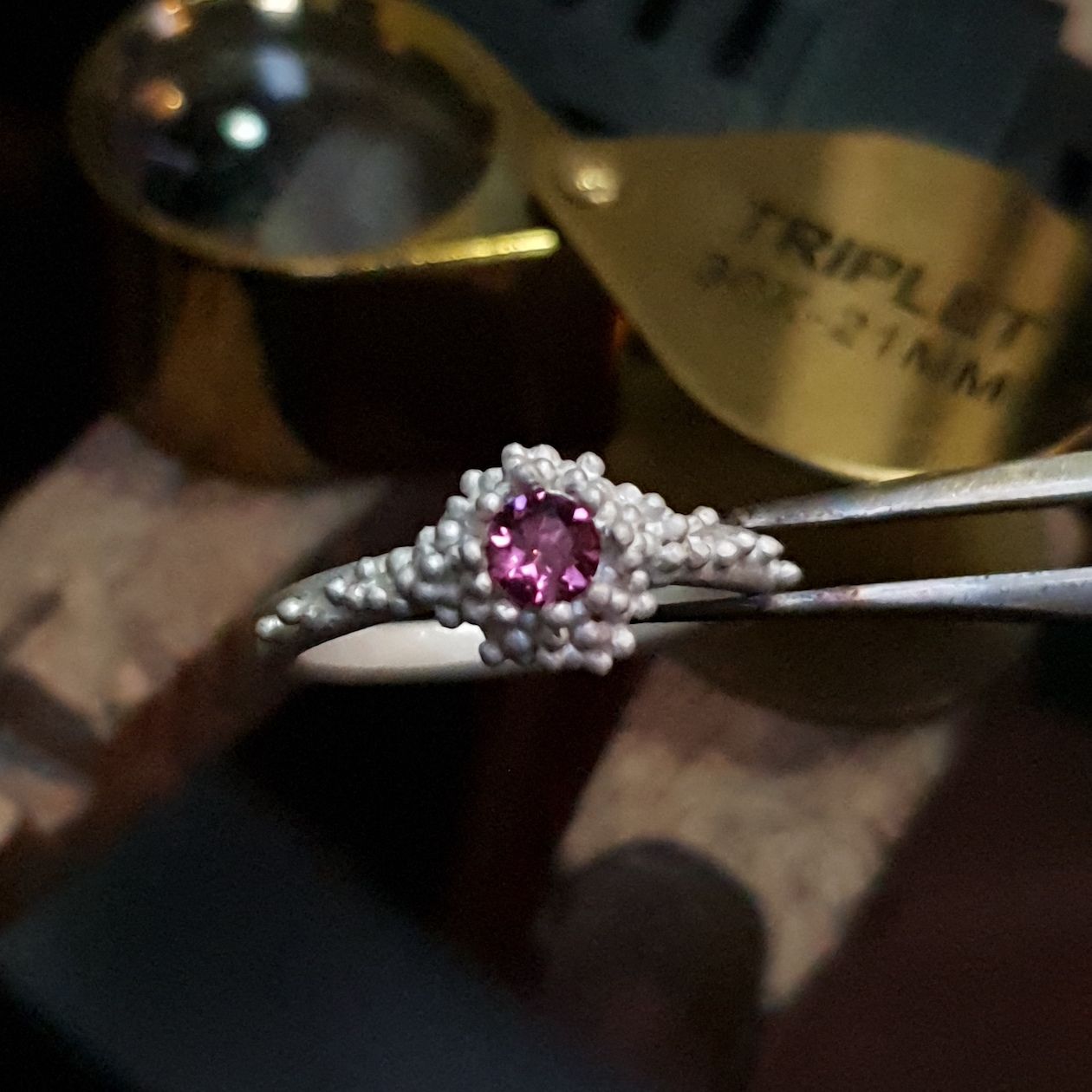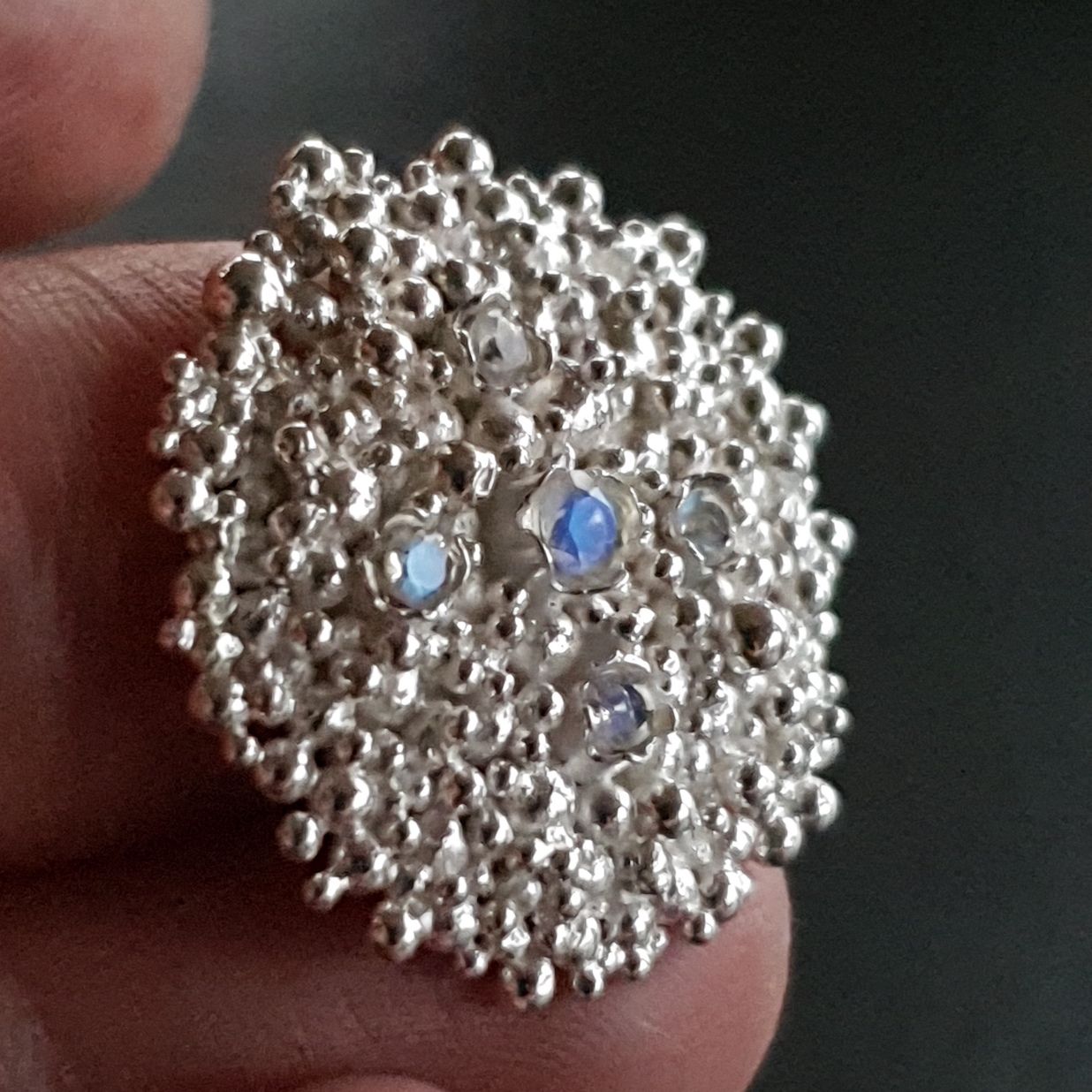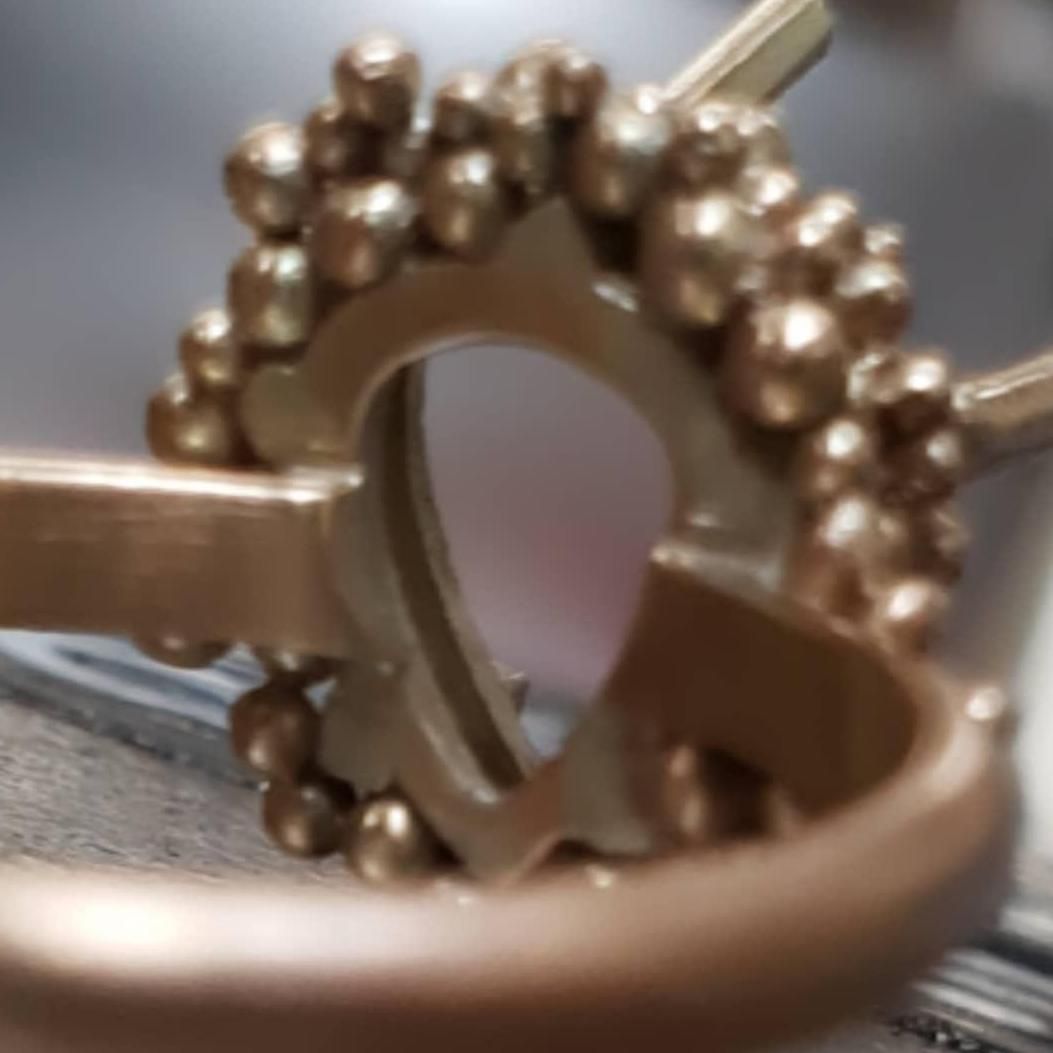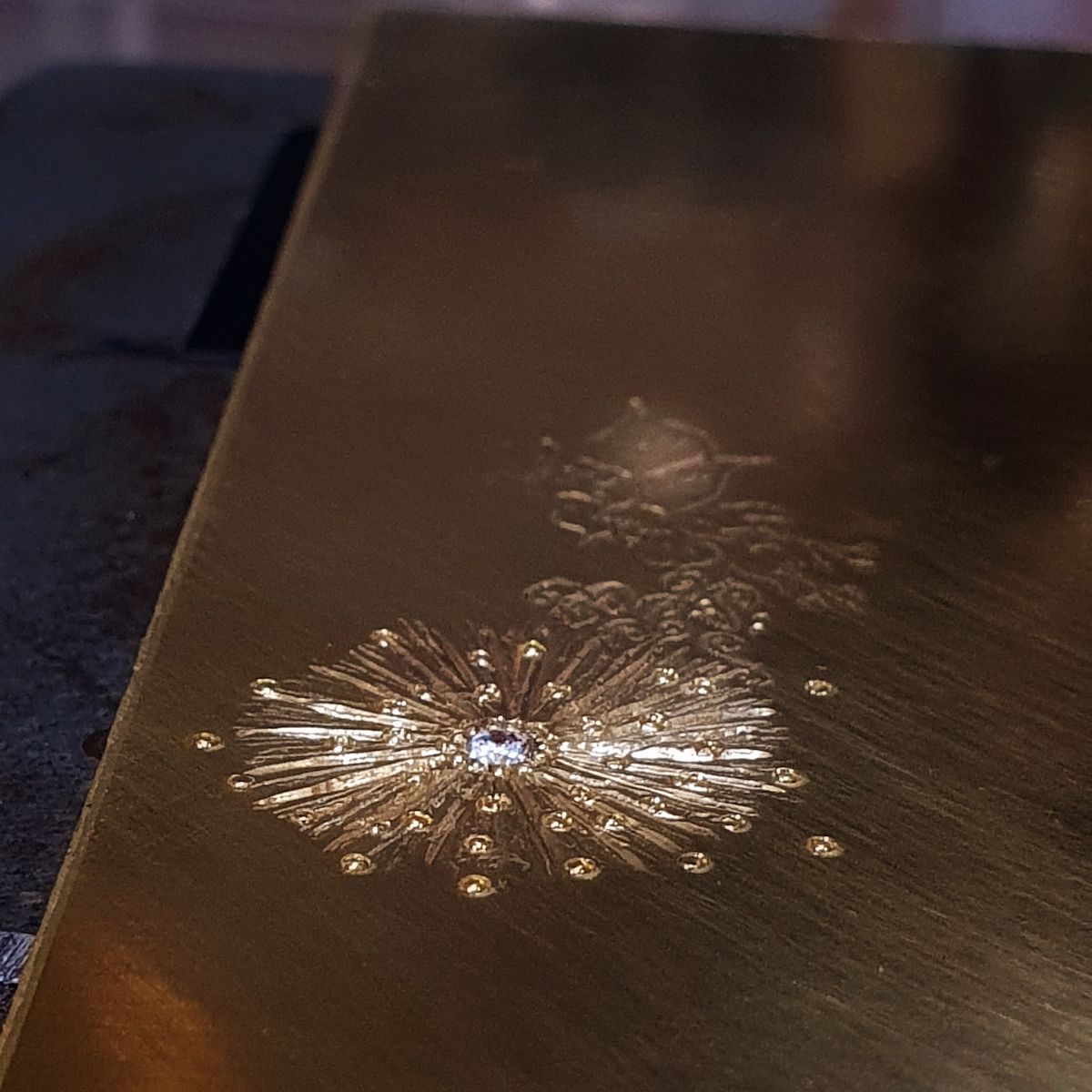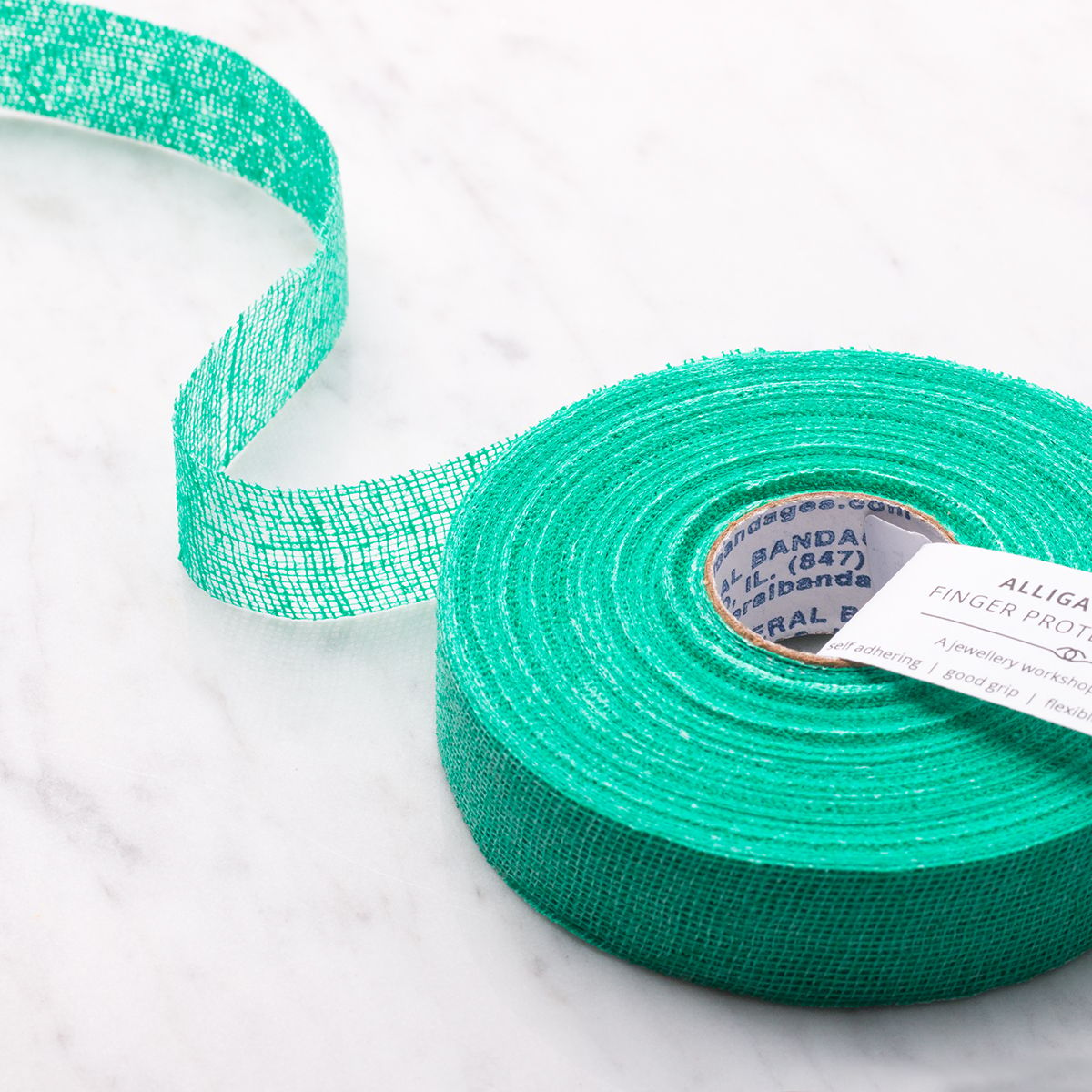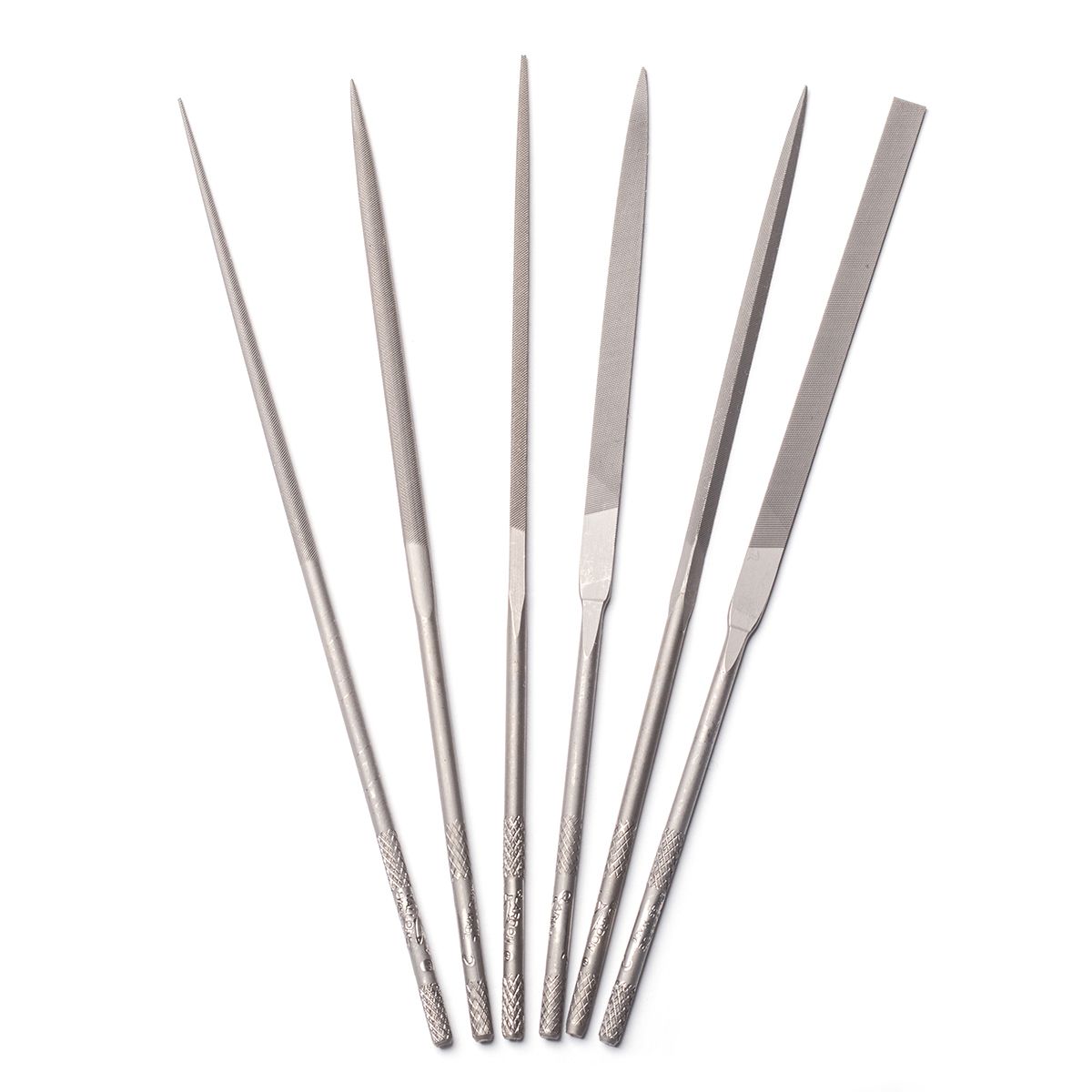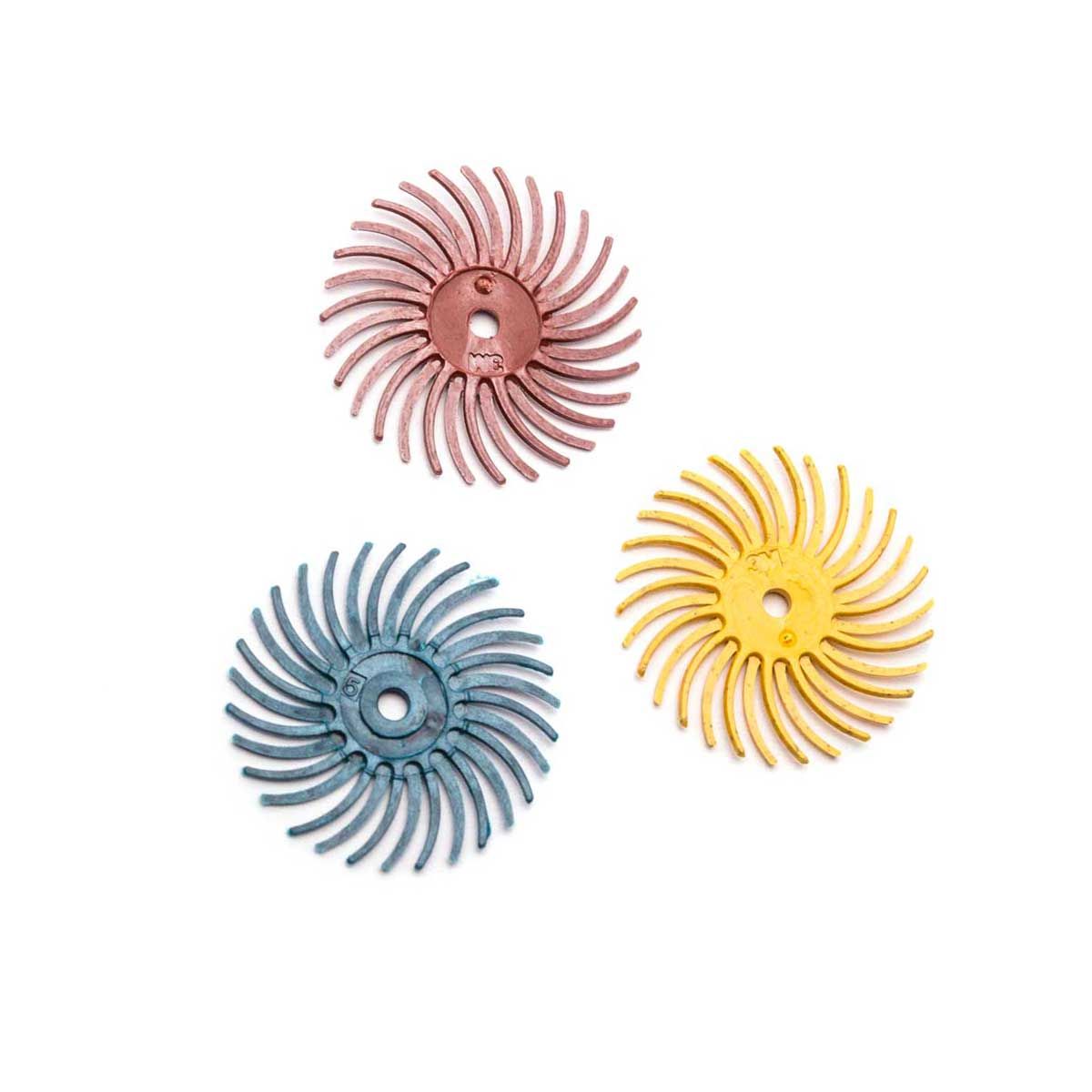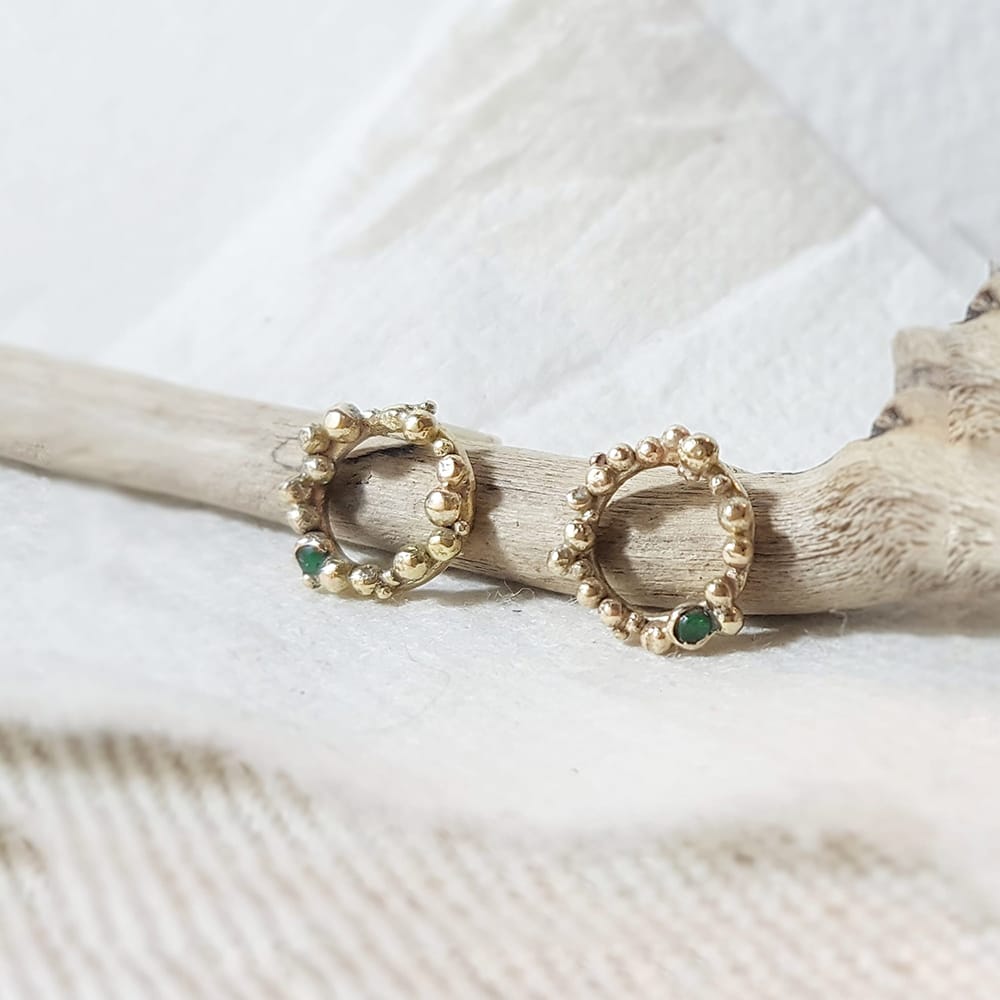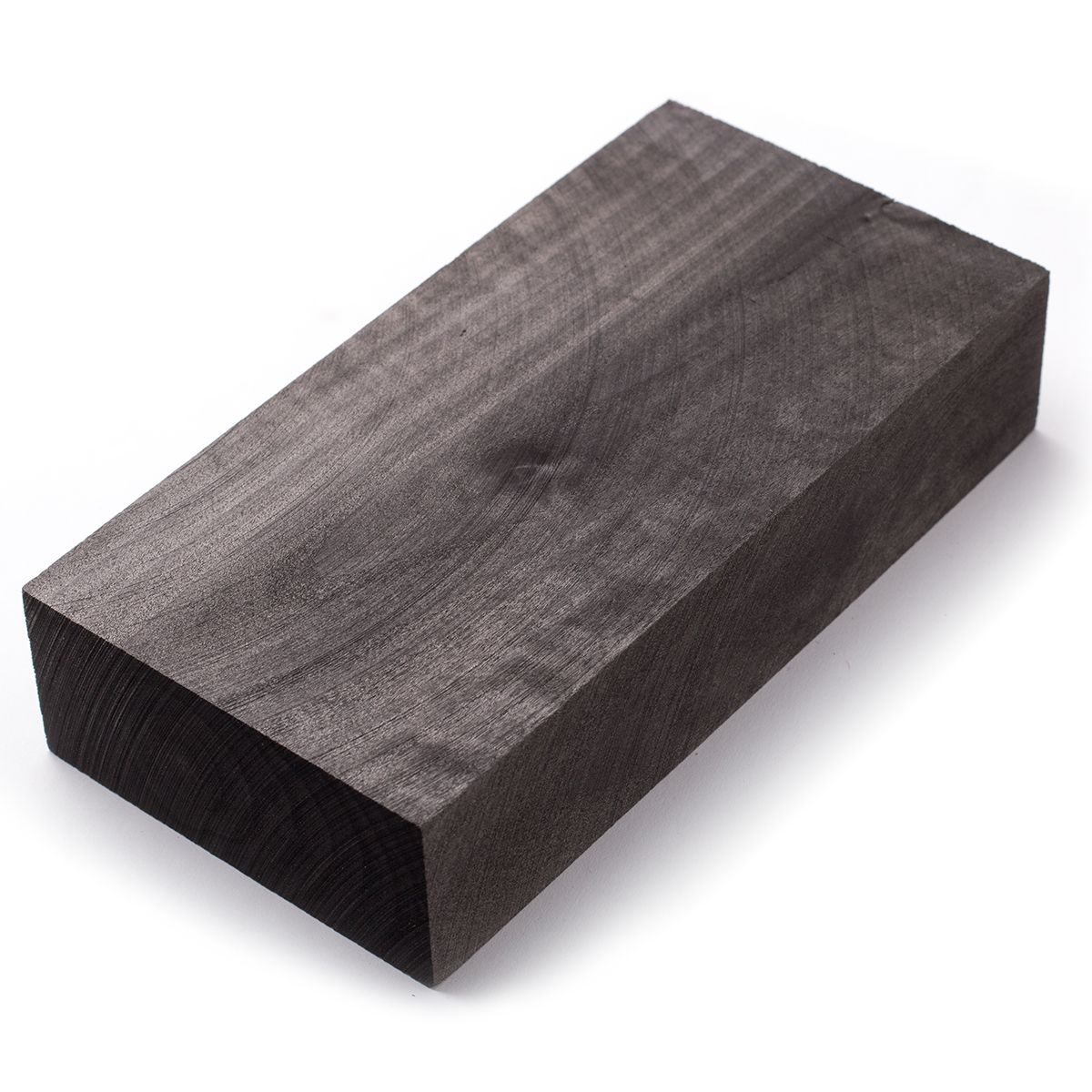Meet The Jeweller: Metalsmithing & Granulation With Sophie Cunliffe
"I had an unquenchable thirst to try and discover all the new techniques that working at the bench could bring to me..."
We're back with another Meet The Jeweller interview! Today we're thrilled to be chatting to the lovely Sophie, who creates utterly beautiful handmade granulation jewellery, creating bespoke pieces in her home of Herefordshire. We find out more about how she discovered the world of metalsmithing, while also sharing her top tips for aspiring jewellers - plus we find out what Sophie gets up to in her spare time.
Let's Meet Sophie...
Hi Sophie, tell us about how you first fell in love with metalsmithing
When I was 15 years old I had the opportunity to do work experience at a jewellers in my local town. I was at High School and preparing to go onto Hereford Art College to study Art & Design. The jewellers I was working in undertook general repairs and also some traditional jewellery making. When I was 16 I started a weekend job at the jewellers where I was often tasked with cleaning and polishing jewellery on the wheel and got the opportunity to observe the more complex metalsmith work.
I developed my love of jewellery; starting to make my own; and this developed when I opened my own shop at 21 years old selling jewellery, accessories and giftware. This was a very busy, profitable business, however, it was very time consuming – including the difficulties of staff, tedium of paperwork and, late night merchandising – opportunities to make my own jewellery became very limited. Unfortunately, six years later somebody very special to me was diagnosed with cancer and sadly was taken from us too soon.
I retreated to Cornwall, and whilst walking on windswept November cliffs her words were ringing in my ears. She was able to show me that I had become drawn into working seven days a week rarely taking time away from the business. Even my breaks away had become buying trips! I realised that I had forgotten the reason why I had started in the first place and that my work as a retailer had taken over from the maker in me. I learnt many valuable lessons from my time running a retail business and it set a foundation that I still rely on today. However, I wanted to be making jewellery and needed to address my work/life balance. I resolved to plot a course that would ensure that I prioritised my making in order to be more fulfilled. This period also taught me to regularly question what I want from life and from my craft, and not to be intimidated in making a change.
I sold my business which opened up financial freedom, and I began again to make my own jewellery but this time selling online. The online business started with my making what I would now consider mainstream commercial styled pieces and after a few years this became frustrating: I wanted to be more creative, more process and technique driven.
Like so many of the ideas I have that have changed the course of things to come, I resolved while on my summer holiday to change things up. Encouraged by my family I still remember sat by the Cornish coast phoning to enrol at Hereford Art College, 17 years after being there the first time around. I was petrified that first evening, I had an exceptional tutor who helped instill self belief, despite the very different work we both produced. Mine so very tiny and intricate, and his large sculptural pieces. He inspired and reassured.
While I had been involved with jewellery for over 20 years by that point, I suddenly got bitten by the bug. I had an unquenchable thirst to try and discover all the new techniques that working at the bench could bring to me. If before I was dedicated to my business it has, in the last 3 years, been much more the case that my desire to explore metalsmithing and new techniques has driven the direction of my work.
In some ways I feel that metalsmithing has been with me for so long but had now evolved from a commodity to a desire to explore the creativity involved in the design process and the technical craft of metalsmithing and the one feeding the other: the techniques inspiring the design and the design pushing me to attempt new and demand higher standards of my technical ability.
"My advice to anybody is to explore and have fun, you are never too old to go back to school but take only what you want from each experience..."
We love your style - how would you describe your jewellery?
Natural: not in a literal sense of flowers and bees, though I’d done more representative work when I first started, but in the sense of trying to look at the essence of the materials that I am working with. One example of this that is prominent in my mind currently is a recently commissioned man’s ring. The client wanted a large turquoise stone. The design I developed was complex but it’s principle in my mind was simple: the ring needed to reflect the natural qualities of the stone and balance and complement its size and presence without becoming unwieldy. I think currently this piece is very emblematic of my style: technique driven to achieve a balance between stone and metal inspired by the properties of each.
How did you learn metalsmithing techniques and what advice would you give to others?
My learning started very young with working in-house at jewellers, and then initially onto the art college. When I left I was back in workshops and then very much self-taught for many years exploring the materials and designs. I then took a big step forward when I returned to college.
My advice to anybody is to explore and have fun, you are never too old to go back to school but take only what you want from each experience. Do what works for you.
What's one project that really pushed you out of your comfort zone and why?
I think the commission for the turquoise man’s ring that I mentioned above. The brief was for a ring inspired by a Jimi Hendrix ring, big, bold but with a Sophie twist. This piece was going way out of my comfort zone. The techniques and processes involved were complex and there was going to be more of them due to the scale and complexity. Fortunately, my little boy managed to use my words against me and told me that: “If you’ve tried and don’t succeed at least you will have learnt and given it a go.”
The 2mm thick shank really took some time, starting from flat sheet, to cut, shape, anneal, then strength to forge. However, with a piece like this it was also the detail required but over such a large area that meant that there was an enormous amount of work required to achieve the design. There were a lot of processes involved. It was an incredible challenge that pushed my making, my thoughts on design, and most certainly my perception of what I can achieve.
One thing I would say to anyone daunted would be that, as intimidated as I was initially, this project it has ended up as one of my favourites.
What were your hobbies as a child?
As a child, I enjoyed cooking, drawing, walking on the beach collecting shells, pressing flowers, and lots of other creative things. These were activities often shared and hold special memories for me, as much for the people I shared them with as the activities themselves.
I am very fortunate to have my own two little babes who, while very different, enjoy sharing many of these things with me now.
What are your main goals for this year?
One of my main goals this year is to try and find/make time to get my new website up and running. This has been in the pipeline for a while but my order book keeps filling with commissions, which I love, but it means that I keep telling myself I haven’t got time and I need to keep making. In the meantime I hope that people get some insight from my Instagram, certainly many of my commissions come from here.
I had also planned to spend time in London this year, attending some of Goldsmiths events and meeting up with other craftspeople. However, like everyone, my plans have met an abrupt end. I think getting through this year with all my family still smiling is the reset goal.
"Anybody wanting to give granulation a go should start with some sterling silver..."
Granulation features heavily in your jewellery - what do you enjoy most about it and what advice would you give to those wanting to give it a go?
Granulation is an amazing way to add texture and volume to a piece to create a sense of size, contrast and framing. What is special to me about granulation is that I can achieve this without adding excess weight or heft to the setting. It enables the setting to hold its own against a large striking gemstone without being bulky.
Anybody wanting to give granulation a go should start with some sterling silver, I think the critical thing is to be able to form the granule correctly and get a good sphere, which takes practice, and just start by introducing a few into a design and doing them really well. They require practice and patience before you get familiar with how they behave; or misbehave!
What's your favourite metal to work with and why?
High carat gold, quite simply the colour is more intense and selfishly, its purity, means that using it in fused granulation is wonderful. I do like 9ct’s softness of colour but it is harder to work with having to solder the granules.
Silver was the first metal I worked with and it’s versatility and the techniques you can achieve with it means that I often explore in silver.
Favourite gemstone and why?
Spinel, I particularly love the reds and blues that you can get. If you’ve never seen a star spinel go have a look, they are simply stunning
Top 3 favourite Kernowcraft products
Learn More About Granulation...
Learn Granulation Techniques
Love Sophie's designs and feeling inspired to give it a go?
Take a look at our casting and granulation tutorials in collaboration with Kim Thomson as part of the 12 Months Of Metal series!
Charcoal Block - Great For Granulation!
Charcoal is an excellent soldering surface as it reflects the heat back onto the metal being soldered for quicker heating as well as creating a reducing atmosphere (consuming the oxygen around the piece being soldered) which helps reduce fire stain. This is a very versatile soldering surface as shapes can be drilled or even carved into the surface to use as a crucible in which to melt and cast metal and it is also great for granulation work.
Also in this section:
- Talking Gold And Sand Casting With Billie Ellen Designs
- Meet The Jeweller: Talking Opal Obsession with Jenny from Sea Surf Rocks
- Chatting To Truro College Exhibition Silversmith Winner, Olivia English
- Day In The Life Of Cornish Eco Jeweller Sarah Drew Jewellery
- Wax Carving, Metal Clay & Coastal Designs With Rockpool Jewellery
- Chatting Unique Nature Inspired Designs & Intricate Sawing With HISO
- Anxiety Jewellery & Favourite Gems With Rozen Jewellery
- Day In The Life Of A Jeweller With Gretel's Metals
- Sea Glass, Healing Gemstones & Cornish Coastal Inspiration With Ula Jewellery
- ‘A Heart of Gold’ Jewellery Collaboration, Raising Awareness of Heart Disease in Women
- Stone Setting, Diamonds & Jewellery Design With Goldsmith Sonia Cheadle
- Magical Metal Clay, Nature & Gems With Susan Studd
- Chatting To Truro College Exhibition Silversmith Winner, Esther Moore
- Handmade Jewellery Inspired By Japanese Heritage & Philosophy With Kumiko
- Creating Unique Jewellery Collections With Gem Lark Jewellery
- Crystal Jewellery With Jessica From 'Roses & Whiskey'
- Statement Crystal Jewellery With FIRENZA
- Electroplating & Crystals With Studio Roan
- Chatting Beading & Wirework With Author & Tutor Sara Withers
- A Day In The Life With Soul Purpose Jewellery
- Meet Jeweller, Tutor & Author Anastasia Young
- A Day In The Life Of A Jeweller With Basia From Stardust Mine Jewellery
- Meet The Jeweller, Author & Tutor Jinks McGrath
- Meet The Maker Transforming Coins & Scrap Metal Into Fun Characters
- Behind the Scenes At The Jewellers Retreat - An Interview With Jessica Rose
- Combining Skills Of Illustration & Metalsmithing With The Sylvan Smith
- Magical & Whimsical Jewellery With Manom Jewellery
- How To Work With Gemstones As A Jeweller With Gemmologist Sally Spencer
- Sea Glass, Personalisation & Christian Jewellery With Jordan Lily
- Chatting Beads, Etsy & Social Media With Emma From Evren Blue
- Garden Studio Tour, Jewellery Making & Packaging With Little Black Cat Jewellery
- Jewellery Inspired By Cornwall, Magic & Myth With Gemheaven Jewellery
- Sand Casting Silver Cockle Shells & Nature Inspired Jewellery With Anna Davenport
- Day In The Life Of Running A Sea Glass Jewellery Business With Created By Niki
- Leo + Elk On Running A Family Business During A Pandemic
- A Day In The Life Of A Jeweller: Finding Normality Again With Kim Thomson
- Gemstone, Body Positivity & Black Lives Matter Designs With 'Jewellery By Eilatan'
- Meet The 'All That Glitters' Contestants Of Series 1
- Briolette Jewellery, Etsy & Learning With Ocean & Earth Jewellery
- What's Inside A Travelling Jeweller's Briefcase?
- Combining Sea Glass & Diamonds With Glasswing Jewellery
- Bohemian Luxe Handmade Jewellery With 'Feathers And Wings'
- Diamonds & Granulation With Milly Maunder
- Then & Now, Jewellery Through The Ages With Sam Stirrat
- Metalsmithing & Granulation With Sophie Cunliffe
- Contemporary Engagement Rings With William White
- Designing An Engagement Ring With Guest Writer Sea Surf Rocks
- Meet The Jeweller & Author Of 'Soldering For Jewellers' Rebecca Skeels
- Jewellery Making Notebook Tour With Jasmine Butler
- Running A Handmade Jewellery Business During A Pandemic With 'Louy Magroos'
- Home Jewellery Studio Tour & Top Tips With Jodie Fern
- Let's Talk Business With Jeweller & Tutor, Karen Young
- Nature & Mental Health Jewellery With Lost Kove
- Meet The Jeweller Behind Hazey Designs
- Jewellery Making Storage Tour With Scruffy Dog Silver
- Meet The Beader Behind Dainty Rocks
- Jewellery Workshop Tour With Little Silver Star
- Mindful Gemstone Jewellery With The Sea Tree Company
- Let's Talk Sea Glass Jewellery With Sadie Jewellery
- Chatting Beads & Growing A Jewellery Business With Liz Lloyd
- Beading With Carolyn Anne Jewellery
- Jewellers Of Colour: Connecting BAME Jewellers In The Jewellery Industry
- Meet The Self-Taught Jeweller Behind Corzana
- Meet The Jeweller Behind The Messy Creative
- Handmade Button Jewellery With Crafty Little Koala
- Beautiful Gemstones For Beautiful Skin With Inlight Beauty
- Meet The Boho Jeweller Behind Moonsalt Jewellery
- Etsy Success & Personalisation With Little Homebird Jewellery
- How Jewellery Making Has Helped My Chronic Illness & Mental Health
- Jewellery Making With Nature's Treasures
- Meet Illustrator & Polymer Clay Jeweller, Nyassa Hinde
- Jewellery Trade Secrets With Metalsmith Society
- Sea Glass Jewellery & Launching A Business With Love Kernow
- Meet The Jeweller Behind London Jewellery School & Jewellers Academy
- Meet Stephen Goldsmith, Author Of Polishing & Finishing For Jewellers
- Resin, Flower & Gemstone Jewellery With Ellanor Aquitaine
- Meet The Jeweller Behind Trinkets By Moonlight
- Meet The Self-Taught Jeweller Behind Olivia Street Silver
- Personalised Handmade Jewellery With Ruby & Wonder
- Meet The Cosmic Jeweller, Vikki Hall
- Meet The Eco-Friendly Jeweller, Jemima Hurlock
- Meet The Cornish Jeweller, Thomas Matthews
- Beachcombing & Jewellery Making With Cornish Agates
- Festival & Boho Jewellery With Tegen
- Mokume Gane & Vessel Pendants With Nicola Bottono
- Meet The Jeweller Behind View Of The Sea
- Artists Residency With Jeweller, Jonathan Videgrain
- Meet The Jeweller & Gemstone Addict Behind Made By Oonagh
- Pre-Loved, Vintage Jewellery With Ella Masters
- Baker's Dozen Exhibition With Sarah Shelton-Palmer
- Meet The Jeweller, Tansy Wilson
- Celestial, Boho & Witchy Jewellery With Amber Wheatley Designs
- Let's Talk Metal Clay With Lisa Cain
- Meet The Jeweller Behind When Caitie Met Soda
- Make It Challenge: Recycling The Same Piece Of Silver For 100 Days
- Bespoke Engagement Rings With Blackacre
- Meet The Jeweller Behind Claire Howard Jewellery
- Meet The Jeweller Behind Award Winner Andrew Berry
- Meet The Nature Inspired Jeweller Behind Lima-Lima
- Creating An Opal Ring & Pendant With Little Joy Jewellery
- Jewellery Inspired By Your Home With Claire Halligan
- Award Winner Monique On Techniques & Cornish Inspiration
- Meet The Jeweller Jonathan Videgrain
- Meet The Jeweller Louella Jewellery
- Meet The Jeweller Behind Bijoux De Chagall
- Alternative Wedding Jewellery With Bloody Mary Metal
- Jeweller Chloe Michell Talks Working With Metal Clay, Tools and Inspiration
- Setting Up Your Work Bench With Jeweller Victoria Walker
- An Interview With NAJ Shortlisted Designer of the Year Sheila Kerr

